“Jaw-dropping.” — Deirdre Donahue, USA Today
It is the most famous military installation in the world. And it doesn't exist. Located a mere seventy-five miles outside of Las Vegas in Nevada's desert, the base has never been acknowledged by the U.S. government — but Area 51 has captivated imaginations for decades.
Myths and hypotheses about Area 51 have long abounded, thanks to the intense secrecy enveloping it. Some claim it is home to aliens, underground tunnel systems, and nuclear facilities. Others believe that the lunar landing itself was filmed there. The prevalence of these rumors stems from the fact that no credible insider has ever divulged the truth about his time inside the base. Until now.
Annie Jacobsen had exclusive access to nineteen men who served the base proudly and secretly for decades and are now aged 75-92, and unprecedented access to fifty-five additional military and intelligence personnel, scientists, pilots, and engineers linked to the secret base, thirty-two of whom lived and worked there for extended periods. In Area 51, Jacobsen shows us what has really gone on in the Nevada desert, from testing nuclear weapons to building super-secret, supersonic jets to pursuing the War on Terror.
This is the first book based on interviews with eye witnesses to Area 51 history, which makes it the seminal work on the subject. Filled with formerly classified information that has never been accurately decoded for the public, Area 51 weaves the mysterious activities of the top-secret base into a gripping narrative, showing that facts are often more fantastic than fiction, especially when the distinction is almost impossible to make.
Character

Colonel Richard S. Leghorn (b: 1919) led the mission to photograph America’s first, post-World War II nuclear explosions during Operation Crossroads, in July 1946. Leghorn is credited with the concept of “overhead” which led to spy planes and satellites.
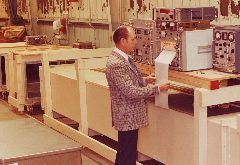
Edward Lovick Jr. (b: 1919) is considered the grandfather of stealth technology. Starting in 1957, Lovick worked at Area 51 with the CIA’s Richard Bissell and Lockheed’s Clarence “Kelly” Johnson to build stealth technology into aircraft, from paper to airplane.
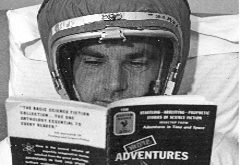
Ray Goudey (b: 1919), the dashing, daring Lockheed test pilot flew the U-2 spy plane’s legendary “Ship One” at Area 51, starting in 1955.
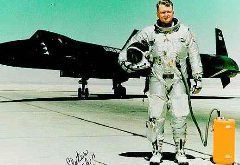
Colonel Hugh “Slip” Slater (b: 1922) earned his stripes fighting Nazi Luftwaffe pilots during WWII. In the early 1960s, Slater worked as CIA commander of the U-2 Chinese Black Cat Squadron, the details of which remain classified. At Area 51, he served as base commander for Operation Oxcart and Operation Black Shield.
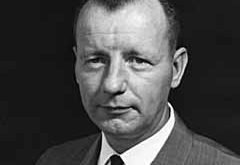
Alfred O’Donnell (b: 1922) armed, wired and fired approximately 186 nuclear bombs next door to Area 51 at the Nevada Test Site, and also at the Pacific Proving Ground in the Marshall Islands. O’Donnell’s colleagues called him “The Triggerman.”
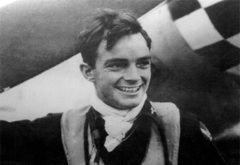
Colonel Hervey S. Stockman (1922-2011) left Princeton to join the Army Air Corps during WWII. He was the first man to fly over the USSR in a U-2. Stockman flew 310 combat missions in three wars until June 1967 when he went down over N. Vietnam and became a POW for nearly six years.

Colonel Sam Pizzo (b: 1922) served as a navigation expert for Oxcart training missions at Area 51. On a previous U.S. Air Force assignment, in 1959, Pizzo escorted President Eisenhower’s nemesis, Nikita Khrushchev, from Moscow to America.
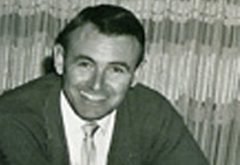
Ralph James ‘Jim’ Freedman (b: 1927) worked as Area 51’s procurement manager for thirteen years, earning him top secret clearance into black projects most others had no need-to-know about. Freedman began his career in black operations at the Nevada Test Site, working as an EG&G weapons engineer. He also photographed nuclear bombs.
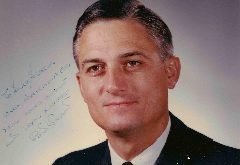
Dr. Albert “Bud” Wheelon (b: 1929) was CIA’s first Deputy Director of Science and Technology. After the Bay of Pigs forced Richard Bissell to resign, Dr. Wheelon became the new Mayor of Area 51. Wheelon is the only CIA officer known to have ridden in the Agency’s seminal Mach 3 spy plane.
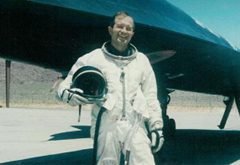
Colonel Kenneth B. Collins (b: 1930) was chosen to be one of the CIA’s elite A-12 Oxcart pilots after being awarded the Silver Star in Korea. Collins survived a spy plane crash over Utah, in 1963 and went on to fly six, dangerous Mach 3 missions over North Vietnam.
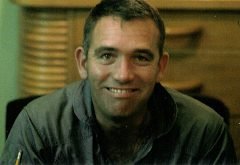
Lieutenant Colonel Francis J. “Frank” Murray (b: 1930) became an A-12 Oxcart pilot for the CIA after the tragic death of pilot Walt Ray. In February 1968, Murray was dispatched on a Mach 3 flight over North Korea in search of the hijacked USS Pueblo and its crew. He flew three additional missions over North Vietnam.

Robert “Bob” Murphy (b: 1930) started out at Area 51 working on the U-2 flight test program as a Lockheed mechanic. He retired more than thirty years later, having advanced to the position of Director of Operations for all Skunkworks Programs including the F-117 Nighthawk, test flown at Area 51 and Area 52.

Captain Donald J. Donohue (b: 1930) Area 51’s Maintenance officer during Oxcart, Donohue was there for the first flight. He often flew chase for Oxcart pilots and remembers when President Kennedy was assassinated, leaving the country in mourning and the fate of Oxcart and its top secret base up in the air.
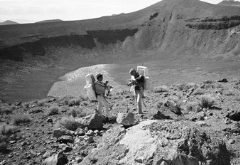
Ernest “Ernie” Williams (b: 1930) worked as the Atomic Energy Commission’s motor pool and food services coordinator. One of the highlights of his storied career was escorting the Apollo astronauts around the atomic craters at the Nevada Test Site to prepare them for walking on the moon.

S. Eugene “Gene” Poteat (b: 1930) was the first CIA officer assigned to the National Reconnaissance Office, an agency so secret its name was not declassified until 1992. Poteat pioneered Electronic Counter Measures, or ECM. He currently serves as President of the Association of Former Intelligence Officers.
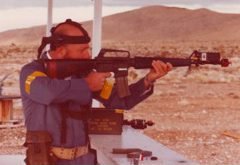
Richard Mingus (b: 1931) part of Area 51’s original security, Mingus guarded the top secret, highly controversial Project 57 “dirty bomb” test. During the Operation Plumbbob test series, he kept intruders out of Area 51, including after a 74-kiloton atomic bomb code-named Hood was detonated in Area 9.
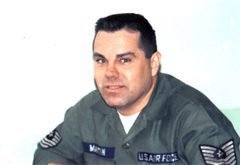
Harry Martin (b: 1931) was in charge of Project Oxcart’s 1.32 million gallon fuel farm at Area 51. He became one of the first men to return to the nearly deserted, top secret base after fallout from atomic testing closed the facility in late 1957.
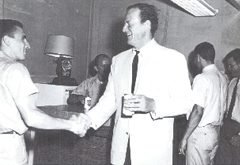
Lieutenant Colonel Tony Bevacqua (b: 1932 ) was the youngest pilot to fly the U-2 at Area 51. Even John Wayne wanted to shake his hand. Formerly Gary Powers’ roommate, Bevacqua was called upon to search for Oxcart pilot Jack Weeks after Weeks was lost over the South China Sea.
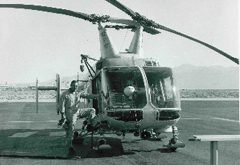
Colonel Charles “Charlie” Trapp (b: 1933) served as the Area 51 helicopter search and rescue pilot in the 1960s. In addition to locating missing pilots, airplanes and drones, Trapp oversaw pilot survival training.
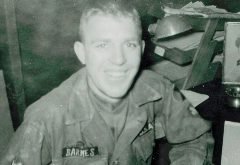
Thornton “T.D.” Barnes (b: 1937) recruited by CIA at 21, Barnes became expert in radar and ECCM. For Project NERVA, he worked to get man to Mars in a nuclear-powered rocket ship in the astonishingly short time of frame of 124 days. Colleagues lauded him for reverse engineering the MiG.

Walter and Reimar Horten when they were Luftwaffe designers for Hitler. After the war, the Hortens were snubbed for Project Paperclip. In 1947, seeking information about a “Flying-saucer Type Aircraft,” U.S. Army G-2 Intelligence launched a European manhunt for the brothers. Once captured, they admitted “contacts with the Russians.” (Collection of David Myhra)

Groom Lake, circa 1917. Once little more than a dry lake bed in the southern Nevada desert, what is now known as Area 51 has become one of the most secret facilities in the world. (Special Collections, University of Nevada-Reno)

This atomic explosion during Operation Crossroads was the opening shot of the Cold War. Stalin watched, and plotted. Colonel Leghorn piloted the aircraft that took this photo, note aircraft’s wing. (Collection of Col. Richard Leghorn)

Alfred O’Donnell became a member of the Manhattan Project after the war. He wired the two atomic bombs exploded during Crossroads, and nearly 200 others at the Nevada Test Site and the Pacific Proving Grounds. (Collection of Alfred O’Donnell)
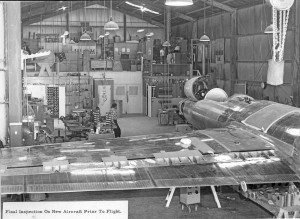
Inside a fabled hangar at Area 51, sits the U-2 in pieces. (CIA/Laughlin Heritage Foundation)

CIA Director Allen Dulles gave Area 51 the code name “Watertown.” (CIA/Laughlin Heritage Foundation)

The original U-2 hangars at Area 51 in 1955. (Collection of Bob Murphy)

The U.S. Air Force had the first contract to fly Area 51 workers in and out of the secret base. A deadly crash in November of 1955 changed that arrangement; everyone on board the C-54 transport was killed. (CIA/Laughlin Heritage Foundation)
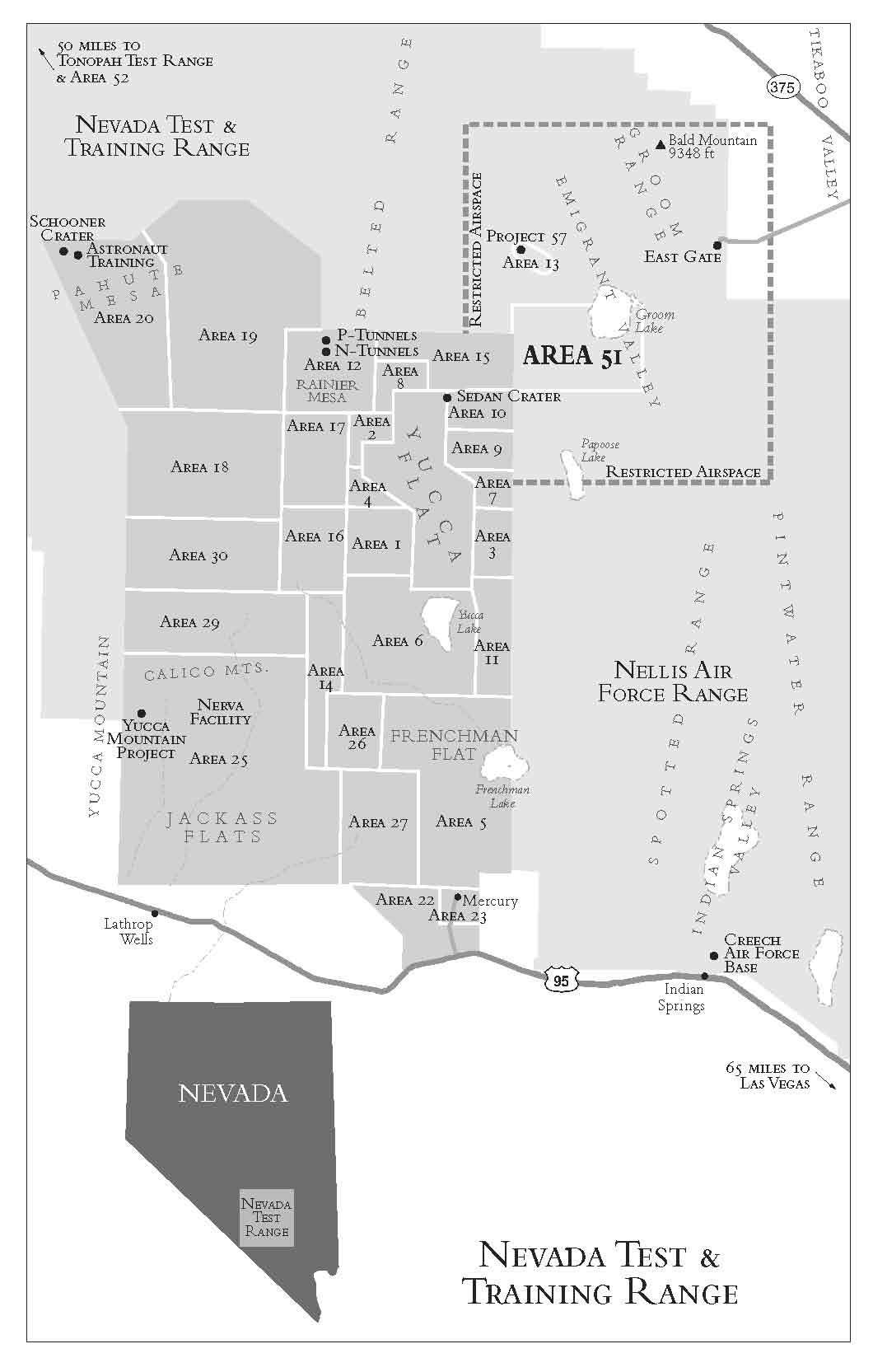
The Nevada Test and Training Range, a federally restricted land parcel slightly smaller that the state of Connecticut. Area 51 and the Nevada Test Site are located inside. (Copyright Annie Jacobsen)
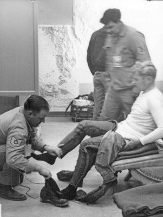
A U-2 pilot undressing after a test flight at Area 51 (CIA/Roadrunners Internationale)
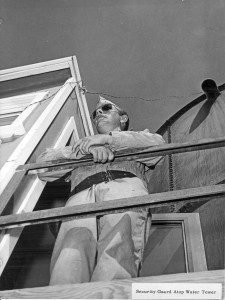
Richard Mingus keeping guard at Area 51. (CIA/Laughlin Heritage Museum)
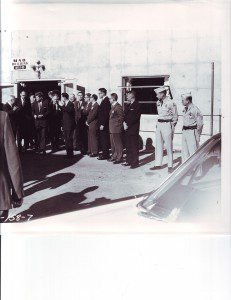
Richard Mingus (far right) guarding President John F. Kennedy at the Nevada Test Site in December of 1962. (Department of Energy)
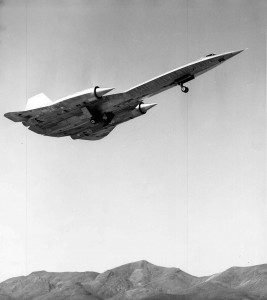
Even before Gary Powers was shot down over Russia in a U-2, the CIA had begun designing its billion dollar, Mach 3 airplane code named the A-12 Oxcart. An early model flies over Area 51 in 1962.(CIA/Roadrunners Internationale)

The NERVA facility next door to Area 51, at Area 25. This is where TD Barnes worked on the nuclear-powered rocket ship, designed to take man to Mars in the astonishingly short time frame of 124 days. His office was underground. (Department of Energy)
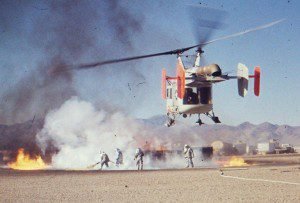
Charlie Trapp was chief of Rescue and Survival at Area 51 from 1962 to 1967. Trapp located the body of Oxcart pilot Walt Ray and his top secret airplane after a fatal crash. (Collection of Col. Charles E. Trapp)
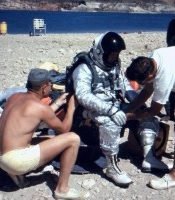
The CIA closed off a section of Lake Mead, in Nevada, so that A-12 Oxcart pilots could practice water landings and rescue protocols. (Collection of Charles E. Trapp)
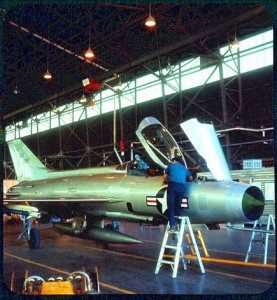
A Russian MiG 21 sits inside a hangar at Area 51. The CIA borrowed one from Mossad so EG&G Special Projects could reverse engineer it. (Collection of Roadrunners Internationale/U.S. Air Force)
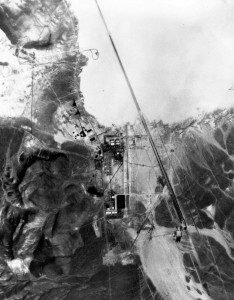
Area 51 from overhead in 1968. (U.S. Geological Survey/FAS)

Richard Mingus in weapons training at the Test Site. (National Nuclear Security Administration)
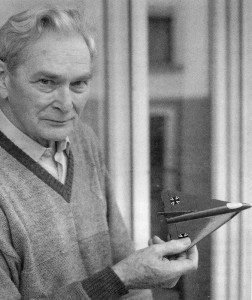
Walter Horten holding a scale model of the Horten 10B in Baden-Baden, Germany in 1987. (Collection of David Myhra)
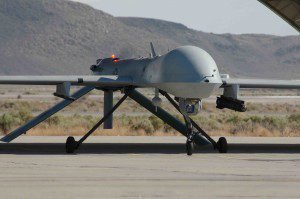
America’s first stealth surveillance drones were flight tested at Area 51. Now they carry missiles. Here, the Predator sits on the tarmac at Creech Air Force Base, thirty miles south of Area 51. (U.S. Air Force/Steve Huckvale)

Known as “The Beast of Kandahar,” Lockheed Martin’s RQ-170 Sentinel is the newest, 21st Century stealth drone to be tested at Area 51. It looks like a Horten Brothers’ flying wing. (artist’s rendering/public domain)

The Air Force flight tested the F-117 stealth bomber at Area 51 and Area 52. (U.S. Air Force)

Yucca Flat, above Area 10, is the most atomic-bombed-out place on earth. The largest crater, called Sedan Crater, is 1,280 feet wide and can be seen from outer space. (National Nuclear Security Administration)
Today
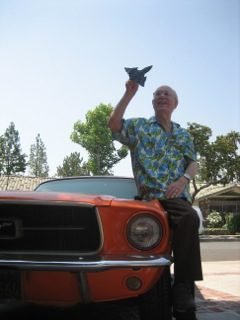
Lovick
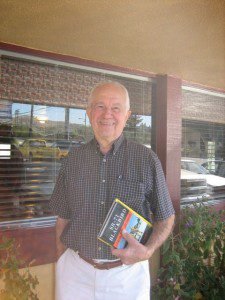
Collins

Barnes

Mingus
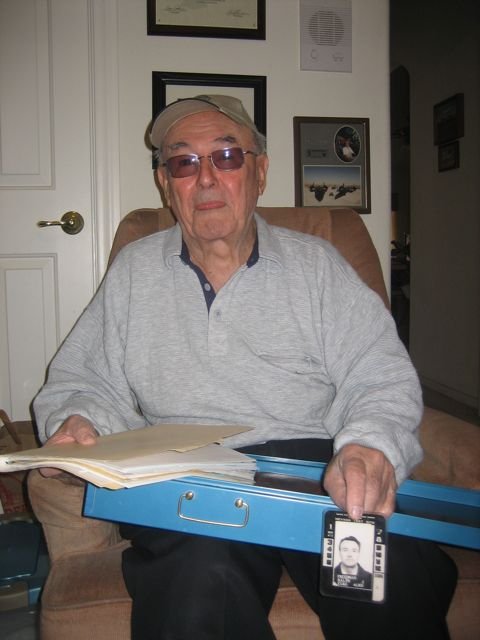
Freedman

Murphy
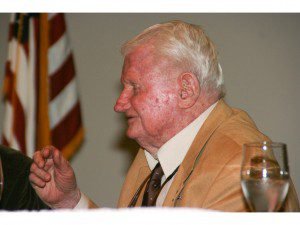
Slater

Murray

O'Donnell

Williams
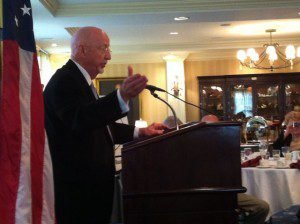
Andersen
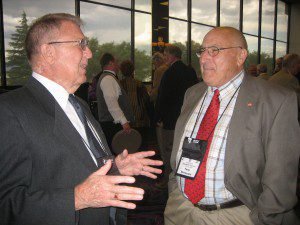
Bevacqua (right)

Slater, Barnes, Jacobsen, Freedman

A-12 Oxcard, CIA Headquarters
